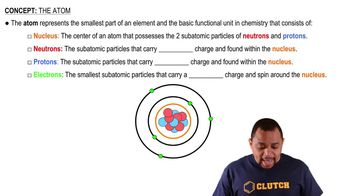Here are the essential concepts you must grasp in order to answer the question correctly.
Atomic Size
Atomic size refers to the distance from the nucleus to the outermost electron shell of an atom. As you move down a group in the periodic table, atomic size increases due to the addition of electron shells, which increases the distance between the nucleus and the outer electrons. Conversely, atomic size decreases across a period from left to right due to increased nuclear charge, which pulls the electrons closer to the nucleus.
Recommended video:
Ionization Energy
Ionization energy is the energy required to remove an electron from an atom in its gaseous state. It is influenced by the atomic size and the effective nuclear charge experienced by the outermost electrons. Generally, as atomic size increases, ionization energy decreases because the outer electrons are further from the nucleus and experience less electrostatic attraction, making them easier to remove.
Recommended video:
Trends in the Periodic Table
The periodic table exhibits specific trends in atomic size and ionization energy. As you move down a group, atomic size increases and ionization energy decreases. In contrast, moving from left to right across a period, atomic size decreases while ionization energy increases. Understanding these trends helps predict how changes in atomic structure affect the energy required to ionize an atom.
Recommended video:
 Verified step by step guidance
Verified step by step guidance


